Honeysuckle variety Nymph
Nymph is a medium-early fruit ripening variety of honeysuckle, bred in St. Petersburg at the Pavlovsk Experimental Station of the V.I. N.I. Vavilov. Acts as a gamma seedling from free pollination of the variety Leningrad giant... The authorship is assigned to M.N. Plekhanova and A.V. Kondrikova. Other variety names: Gamma, No. 778-11. In 1998, this honeysuckle was included in the State Register of Breeding Achievements.
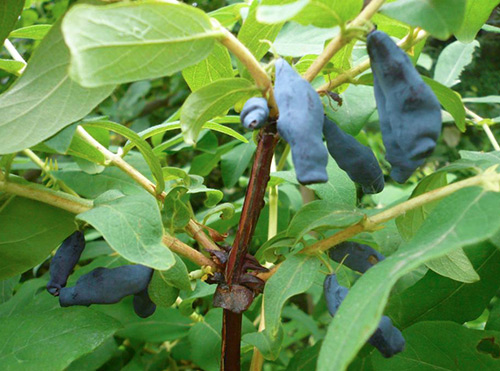
Photo: Kerezhene Lyudmila, Kaliningrad
Bushes of medium vigor, sparse (1.5 × 1.7 m), with straight skeletal branches and a rounded, slightly spreading crown. Shoots are thick, long, pubescent, straight, brownish-green in color, with a slight anthocyanin tinge. The leaves are large, elongated-oval, with pointed tops, dark green. The leaf blade is almost flat, slightly wavy, with a broadly oval base.
Berries are large in size (the average weight of one fruit is 1.16 g, maximum - 3 g, diameter - 9 mm, length - 28 - 30 mm), elongated-fusiform, sometimes curved, with a strongly knobby surface. The skin is dense, thin, covered with a waxy bloom of medium intensity. The color of the fruit is bluish blue. The pulp has a fibrous consistency, the taste is sweet, with pronounced sourness, slightly tart, with a strong spicy aroma and a weak piquant bitterness. Tasting assessment of the taste of the variety - 4.8 points. By chemical composition, the fruits contain: dry matter (14.3%), the amount of sugars (8.8%), acids (2.1%), ascorbic acid (54 mg / 100 g). A variety for universal use.
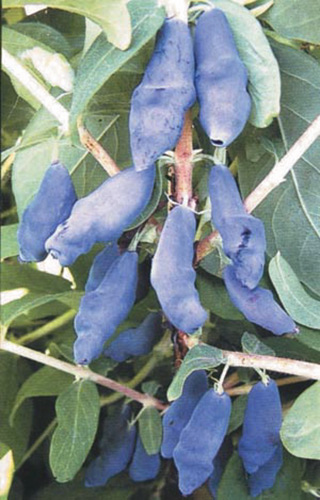
Nymph honeysuckle fruits ripen in mid-June. On young shrubs, the berries do not crumble when ripe, but with age, there may be a slight crumbling of ripe fruits. The variety is productive: from 1.3 to 2 kg of fruits are harvested from one bush, under favorable conditions it is possible to double the yield indicators. Early maturity is good: the bushes bear fruit in the 3rd - 4th year for 20 - 25 years. The variety is highly winter-hardy: it tolerates the winters of central Russia without problems, it is suitable for cultivation in extreme conditions. Disease resistance is good: the nymph does not suffer from diseases more often than other standard varieties, although it does not differ in particular resistance to them.
This honeysuckle is self-fertile. The best pollinators include varieties: Amphora, Chosen One, Azure, Pavlovskaya, In memory of Gidzyuk.
The variety is unpretentious to soil conditions, but the most favorable are loamy fertilized soils.
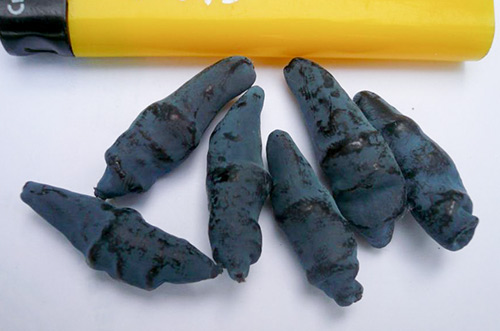
Photo: Kerezhene Lyudmila, Kaliningrad
Among the main advantages of Nymphs are: large fruits of dessert taste, high winter hardiness and productivity.
Speaking of the shortcomings, the tendency of the crown to thicken and the average crumbling of ripe berries are noted.
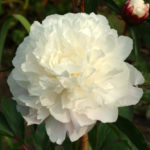
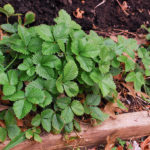
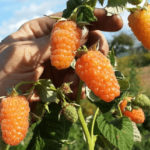
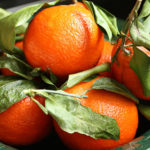
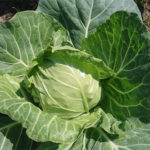
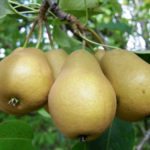



There is plenty of speculation on the net about the difficulties of growing honeysuckle in the South. I so wanted to taste the berries from my garden, but I was afraid that the growth of the bushes and the harvest would be meager. But nevertheless, they planted three varieties in a triangle - Nymph, Slobozhanka and Azure. In the fall, because the spring planting of honeysuckle is doomed to failure. In our country, it releases buds and begins to bloom, as soon as the earth thaws. And different varieties were supposed to pollinate each other. I must say right away, in comparison with the other two, this bush gives less uneven curved berries. This season is the fourth since planting, and only about 2.5 kg were collected from the Nymph.But I will add the thin skin of its fruit as a plus. They are easily kneaded into a dessert aromatic mass - sweet, with a slight sourness. And these are the first berry vitamins of the season.